Sql Start Of Previous Month
In SQL, there may be situations where you need to calculate the start of the previous month. This can be useful for various purposes like generating reports, filtering data, or performing time-based calculations. Fortunately, SQL provides several functions and techniques to achieve this result. In this article, we will explore different methods to calculate the start of the previous month and discuss their usage and advantages. Additionally, we will address common questions and provide detailed explanations to help you understand and implement these techniques effectively.
Calculating Start of Previous Month Using DATEADD and DATEPART Functions
One approach to calculate the start of the previous month involves using the DATEADD and DATEPART functions in SQL. The DATEADD function allows you to add or subtract a specific interval from a given date, while the DATEPART function extracts the specified part (such as year, month, or day) from a date.
To calculate the start of the previous month, you first subtract a month from the current date using the DATEADD function in combination with the DATEPART function to obtain the month and year. Here’s an example query that demonstrates this:
“`sql
SELECT DATEADD(MONTH, -1, GETDATE()) AS StartOfPreviousMonth
“`
In this query, the DATEADD function subtracts one month from the current date (GETDATE()). As a result, you get the start of the previous month. By adjusting the interval value, you can calculate the start of any previous month as per your requirements.
Calculating Start of Previous Month Using EOMONTH Function
Another method to calculate the start of the previous month is by utilizing the EOMONTH function in SQL. The EOMONTH function returns the last day of a specified month, which can be used in conjunction with the DATEADD function to calculate the start of the previous month.
By subtracting one month from the current date using the DATEADD function, and then using the EOMONTH function on the resulting date, you can obtain the end date of the previous month. Finally, by adding one more day to the end date, you get the start of the previous month. Here’s an example query that demonstrates this technique:
“`sql
SELECT DATEADD(DAY, 1, EOMONTH(DATEADD(MONTH, -1, GETDATE()), -1)) AS StartOfPreviousMonth
“`
In this query, the DATEADD function subtracts one month from the current date, resulting in the end of the previous month. The EOMONTH function is then used to obtain the exact last day of that month. By adding one more day, the start of the previous month is obtained.
Calculating Start of Previous Month Using DATEFROMPARTS Function
The DATEFROMPARTS function in SQL allows you to create a date from individual parts like year, month, and day. By combining this function with the DATEDIFF function, you can calculate the start of the previous month.
To achieve this, you first determine the number of months to subtract using the DATEDIFF function. Then, you use the DATEFROMPARTS function to create a new date by subtracting the computed month value from the current year and month. Here’s an example query that demonstrates this technique:
“`sql
SELECT DATEFROMPARTS(YEAR(GETDATE()), MONTH(GETDATE()) – 1, 1) AS StartOfPreviousMonth
“`
In this query, the DATEFROMPARTS function is used to construct the date for the start of the previous month. By subtracting one from the current month (MONTH(GETDATE()) – 1) and using the current year (YEAR(GETDATE())), the desired date is obtained.
Calculating Start of Previous Month Using CONVERT Function
The CONVERT function in SQL is used to convert a value from one data type to another. By converting a string representation of the current date to a date format, you can manipulate it using the DATEADD function to obtain the start of the previous month.
To achieve this, you first convert the current date to a string representation using the CONVERT function, specifying the desired date format. Then, you use the DATEADD function to subtract one month from the converted date. Finally, by converting it back to the date data type, you get the start of the previous month. Here’s an example query that demonstrates this technique:
“`sql
SELECT CONVERT(DATE, DATEADD(MONTH, -1, CONVERT(VARCHAR(10), GETDATE(), 101)), 101) AS StartOfPreviousMonth
“`
In this query, the CONVERT function is used to convert the current date (GETDATE()) to a string representation in the format ‘mm/dd/yyyy’ (101). The DATEADD function then subtracts one month from this converted date. Finally, by converting it back to the date data type, the start of the previous month is obtained.
Calculating Start of Previous Month Using SUBSTRING Function
The SUBSTRING function in SQL allows you to extract parts of a string. By manipulating the current date as a string and using the SUBSTRING function, you can derive the start of the previous month.
To accomplish this, you first convert the current date to a string format that includes the year and month. Then, you use the SUBSTRING function to extract the year and month portions, subtracting one from the month value. Finally, by concatenating the manipulated year and month with the day ’01’, you can obtain the start of the previous month. Here’s an example query that demonstrates this:
“`sql
SELECT DATEADD(MONTH, -1, CONCAT(SUBSTRING(CONVERT(VARCHAR(10), GETDATE(), 120), 1, 7), ‘-01’)) AS StartOfPreviousMonth
“`
In this query, the CONVERT function converts the current date to a string representation in the format ‘yyyy-mm-dd’ (120). The SUBSTRING function then extracts the year and month portions (substring from index 1 to 7). By subtracting one from the month value using the DATEADD function and concatenating it with the day ’01’, the start of the previous month is obtained.
Calculating Start of Previous Month Using GETDATE Function
A straightforward approach to calculate the start of the previous month involves using the GETDATE function to obtain the current date and time, and then manipulating it using the DATEADD function.
By subtracting one month from the current date using the DATEADD function, the start of the previous month can be determined. Here’s an example query that demonstrates this technique:
“`sql
SELECT DATEADD(MONTH, -1, DATEADD(DAY, 1 – DAY(GETDATE()), GETDATE())) AS StartOfPreviousMonth
“`
In this query, the inner DATEADD function subtracts the number of days after the first day of the current month (1 – DAY(GETDATE())) from the current date. By applying the outer DATEADD function, one month is subtracted from this intermediate result, resulting in the start of the previous month.
Calculating Start of Previous Month Using TRUNCATE Function
The TRUNCATE function in SQL is used to remove the time portion from a date, resulting in a truncated date. By combining the TRUNCATE function with the DATEADD function, you can calculate the start of the previous month based on the current date.
To calculate the start of the previous month, you first truncate the current date using the TRUNCATE function. Then, you use the DATEADD function to subtract one month from the truncated date. Finally, by truncating the resulting date again, you obtain the start of the previous month. Here’s an example query that demonstrates this technique:
“`sql
SELECT TRUNCATE(DATEADD(MONTH, -1, TRUNCATE(GETDATE(), ‘MONTH’)), ‘MONTH’) AS StartOfPreviousMonth
“`
In this query, the TRUNCATE function is applied twice. First, it removes the time portion from the current date (GETDATE()) by truncating it to the nearest month. Then, the DATEADD function subtracts one month from this truncated date. Finally, by applying the TRUNCATE function once more, the start of the previous month is obtained.
Calculating Start of Previous Month Using CTE (Common Table Expression)
A Common Table Expression (CTE) is a temporary result set that can be referenced within a SQL statement. By utilizing a CTE, combined with the DATEADD and GETDATE functions, you can calculate the start of the previous month in a more readable and modular way.
To achieve this, you define the CTE, which includes the current date obtained from the GETDATE function. Then, you use the DATEADD function to subtract one month from the CTE’s date and generate the start of the previous month. Here’s an example query that demonstrates this technique:
“`sql
WITH CTE AS (
SELECT GETDATE() AS CurrentDate
)
SELECT DATEADD(MONTH, -1, CTE.CurrentDate) AS StartOfPreviousMonth
FROM CTE
“`
In this query, the CTE is defined with the CurrentDate column representing the current date obtained from the GETDATE function. By referencing the CTE within the subsequent SELECT statement, you can easily apply the DATEADD function to calculate the start of the previous month.
Calculating Start of Previous Month Using User-Defined Function (UDF)
A User-Defined Function (UDF) in SQL allows you to create custom functions suited to your specific needs. By creating a UDF that incorporates the DATEADD, DATEPART, and GETDATE functions, you can calculate the start of the previous month more conveniently.
To create the UDF, you define the required parameters and implement the calculation logic within the function body. By allowing the user to specify the date and the number of months to subtract, the UDF provides flexibility in determining the start of any previous month. Here’s an example UDF that demonstrates this technique:
“`sql
CREATE FUNCTION dbo.GetStartOfPreviousMonth(@date DATE, @months INT)
RETURNS DATE
AS
BEGIN
RETURN DATEADD(MONTH, -@months, DATEADD(DAY, 1 – DAY(@date), @date))
END
“`
In this UDF, the parameter @date represents the input date, while @months specifies the number of months to subtract. The DATEADD function subtracts the specified number of months from the input date, and the DAY function determines the number of days after the first day of the month. By manipulating the date using these functions, the start of the previous month is calculated and returned as the result.
FAQs
Q: How can I get the previous month in SQL?
A: To obtain the previous month in SQL, you can use various techniques, such as subtracting one month from the current date using the DATEADD function or manipulating the current date as a string representation.
Q: How can I get the first day of the month in SQL?
A: The first day of the month can be obtained in SQL by using the DATEFROMPARTS function and specifying the current year and month along with the day ’01’.
Q: How can I subtract a month in SQL?
A: To subtract a month in SQL, you can use the DATEADD function and specify the interval as ‘MONTH’ along with the desired number of months to subtract.
Q: How can I get the last day of the current month in SQL?
A: The last day of the current month can be obtained in SQL by utilizing the EOMONTH function, which returns the last day of a specified month.
Q: How can I get the first date of the previous month in MySQL?
A: In MySQL, you can use the DATE_SUB function to subtract one month from the current date and extract the year and month components using the YEAR and MONTH functions. Finally, by combining these parts with the day ’01’, you can obtain the first date of the previous month.
Q: How can I get the first day and last day of the month in SQL?
A: The first day of the month can be calculated using the DATEFROMPARTS function, specifying the current year and month along with the day ’01’. The last day of the month can be obtained using the EOMONTH function.
Q: How can I get the last day of the last month in PostgreSQL?
A: In PostgreSQL, you can subtract one month from the current date using the INTERVAL ‘1 month’ syntax and obtain the last day of the resulting month by utilizing the date_trunc and interval functions.
Q: How can I get the end of a date in SQL?
A: The end of a date in SQL can be determined by using the EOMONTH function, which returns the last day of a specified month.
In conclusion, SQL provides various methods to calculate the start of the previous month based on the current date. Whether you prefer to use functions such as DATEADD, DATEPART, EOMONTH, DATEFROMPARTS, CONVERT, SUBSTRING, GETDATE, TRUNCATE, or techniques like CTE or UDF, there are multiple options to suit your requirements. By implementing these techniques effectively, you can seamlessly obtain the desired results and enhance your SQL queries and data analysis capabilities.
Getting The First Day And Last Day Of A Month In Sql Server
How To Get Start Of Previous Month In Sql?
In SQL, it is often necessary to retrieve specific data based on date ranges. This can be particularly challenging when trying to obtain data for the previous month. However, by utilizing various SQL functions and techniques, you can easily achieve this task. In this article, we will explore different methods to obtain the start of the previous month in SQL, providing you with greater flexibility and control over your data retrieval process.
Method 1: Using the DATEADD and DATEPART functions
One approach to getting the start of the previous month involves using the DATEADD and DATEPART functions in SQL. The DATEADD function allows you to add or subtract a specified number of intervals to a given date, while the DATEPART function extracts a specific part (like the month or year) from a date.
To retrieve the start of the previous month, you can follow these steps:
1. Get the current date using the GETDATE() function.
2. Subtract one month from the current date using the DATEADD function.
3. Use the DATEPART function to extract the month part from the modified date obtained in step 2.
4. Subtract the extracted month from the modified date to obtain the start of the previous month.
Here’s an example SQL query that implements this method:
“`
SELECT DATEADD(MONTH, -1, GETDATE()) – (DATEPART(DAY, DATEADD(MONTH, -1, GETDATE())) – 1) AS StartOfPreviousMonth;
“`
Method 2: Utilizing the EOMONTH function
Another approach involves using the EOMONTH function, which returns the last day of the month that is a specified number of months before or after a given date. By providing a negative month value, you can obtain the end of the previous month. Afterward, you can easily calculate the start of the previous month by adding one day to the retrieved date.
Here’s an example query that demonstrates this method:
“`
SELECT DATEADD(DAY, 1, EOMONTH(GETDATE(), -2)) AS StartOfPreviousMonth;
“`
Method 3: Leveraging the DATEFROMPARTS function
In SQL Server 2012 and later versions, you can also use the DATEFROMPARTS function to retrieve the start of the previous month. This function constructs a date value based on the specified year, month, and day.
To obtain the start of the previous month using this method, you need to follow these steps:
1. Get the current year using the DATEPART function.
2. Get the previous month using the DATEPART function.
3. Set the day part to 1, as it represents the start of the month.
4. Use the DATEFROMPARTS function with the values retrieved in steps 1, 2, and 3 to obtain the start of the previous month.
Here’s an example SQL query that implements this method:
“`
SELECT DATEFROMPARTS(DATEPART(YEAR, GETDATE()), DATEPART(MONTH, GETDATE()) – 1, 1) AS StartOfPreviousMonth;
“`
FAQs:
Q: Are these methods compatible with all SQL databases?
A: The specific functions and techniques mentioned in this article might vary across different SQL database systems. It is recommended to consult the documentation specific to your SQL database to ensure compatibility.
Q: Can I retrieve data for a specific day within the previous month?
A: Yes, you can modify the provided queries by changing the day part to any desired value. For example, to retrieve data for the 15th of the previous month, you need to replace the “1” in the queries with “15”.
Q: What if I need to calculate the start of the previous month for a date other than the current date?
A: In that case, you can substitute the GETDATE() function with the desired date value in the appropriate query.
Q: Can I use these methods to calculate the start of any previous month?
A: Absolutely! By modifying the negative value used in these methods, you can retrieve the start of any previous month. For instance, using -3 instead of -1 will give you the start of two months ago.
Q: Are there any performance considerations when using these methods?
A: The performance of these methods may vary depending on the size and complexity of your database. It is recommended to evaluate the performance and consider indexing strategies, especially when dealing with large datasets.
In conclusion, retrieving the start of the previous month in SQL can be achieved through various techniques. Whether you prefer using functions like DATEADD, DATEPART, EOMONTH, or DATEFROMPARTS, each method allows you to easily obtain the desired result. By grasping these methods, you will have greater control over your data retrieval process, facilitating more precise and efficient data analysis.
How To Get The Previous Month In Mysql?
MySQL is one of the most widely used database management systems and is frequently employed to handle enormous amounts of data. When working with dates in MySQL, it is often necessary to retrieve data from specific time periods. One common requirement is to retrieve data from the previous month. This article will guide you on how to accomplish this task in MySQL, exploring various methods and their implementation.
Method 1: Using CURRENT_DATE and INTERVAL
We can utilize the CURRENT_DATE function along with the INTERVAL keyword to calculate the previous month. The INTERVAL keyword allows us to manipulate dates and times by specifying a specific period to add or subtract. In this case, we want to subtract one month.
Consider the following query:
SELECT * FROM table_name WHERE date_column >= DATE_SUB(CURRENT_DATE(), INTERVAL 1 MONTH)
AND date_column < CURRENT_DATE();
Here, "table_name" represents your table's name, and "date_column" denotes the column containing your date values. The query retrieves all rows where the date_column value is greater than or equal to the first day of the previous month and less than today's date.
Method 2: Using EXTRACT and DATE_SUB
Another approach involves using the EXTRACT function to retrieve the month and year components from the current date. By extracting the month and year, we can easily calculate the previous month. DATE_SUB is then used to subtract one month.
Have a look at the following example:
SELECT * FROM table_name WHERE EXTRACT(YEAR_MONTH FROM date_column) = EXTRACT(YEAR_MONTH FROM DATE_SUB(CURRENT_DATE(), INTERVAL 1 MONTH));
This query selects all rows from the table where the date_column's year and month match the previous month's year and month.
Method 3: Using DATE_FORMAT and DATE_SUB
DATE_FORMAT allows us to convert date values into different formats according to our requirements. In combination with DATE_SUB, we can convert the current date into the desired format.
Consider this query:
SELECT * FROM table_name WHERE DATE_FORMAT(date_column, '%Y-%m') = DATE_FORMAT(DATE_SUB(CURRENT_DATE(), INTERVAL 1 MONTH), '%Y-%m');
This query retrieves all rows where the formatted date of the date_column field matches the formatted date of the previous month's date.
FAQs:
Q: Why is there a need to retrieve data from the previous month in MySQL?
A: There are various scenarios where accessing data from the previous month is necessary, such as generating monthly reports or tracking monthly performance.
Q: Can I retrieve data from a specific month and year in MySQL?
A: Yes, you can modify the aforementioned queries by changing the INTERVAL value or the subtrahend in DATE_SUB to match the desired month and year.
Q: Are there any alternative methods to retrieve data from previous months?
A: Yes, apart from the methods mentioned in this article, you can also use the YEAR, MONTH, and DAY functions in MySQL to extract specific components of a date and manipulate them as required.
Q: Can these methods be combined with other queries?
A: Absolutely! You can include these methods in various query clauses like WHERE, JOIN, and GROUP BY based on your specific data retrieval needs.
Q: Is it possible to retrieve data from multiple previous months?
A: Yes, you can modify the queries accordingly by using appropriate logical operators like OR or BETWEEN, allowing you to retrieve data from multiple previous months.
In conclusion, retrieving data from the previous month in MySQL can be achieved using various methods by leveraging functions such as CURRENT_DATE, INTERVAL, EXTRACT, DATE_SUB, and DATE_FORMAT. By employing these techniques, you can easily access and analyze the data relevant to specific time periods, aiding in decision-making and analysis within your projects or organization.
Keywords searched by users: sql start of previous month Get previous month in SQL, Get first day of month SQL, Minus month in sql, Sql get last day of current month, Mysql get first date of previous month, Get first day and last day of month SQL, Get last day of last month postgresql, Get end of date sql
Categories: Top 97 Sql Start Of Previous Month
See more here: nhanvietluanvan.com
Get Previous Month In Sql
When working with SQL, it is often necessary to retrieve data based on specific date criteria. One common requirement is to fetch data from the previous month. In this article, we will explore different approaches to retrieve the previous month in SQL. We will also address frequently asked questions related to this topic.
Calculating the previous month can be done in various ways depending on the database management system (DBMS) being used. Let’s discuss some of the commonly used methods below:
1. Using DATEADD and DATEPART Functions:
One way to retrieve the previous month is by using the DATEADD and DATEPART functions, which are widely supported in different DBMSs. The DATEPART function allows extracting the month component from a given date, and the DATEADD function adds or subtracts a specified interval to a date.
Here is an example query that demonstrates the usage of these functions:
“`
SELECT DATEADD(MONTH, -1, GETDATE()) AS PreviousMonth
“`
In this query, the DATEADD function subtracts one month from the current date obtained through the GETDATE() function.
2. Using DATE_TRUNC or TRUNC functions:
Some DBMSs provide functions like DATE_TRUNC or TRUNC, which are used to extract a specific part of a date value. By truncating the current date to the month and then subtracting one month, we can obtain the previous month.
Here’s an example query that uses the TRUNC function:
“`
SELECT TRUNC(SYSDATE, ‘MONTH’) – INTERVAL ‘1’ MONTH AS PreviousMonth
“`
In this query, SYSDATE represents the current date, TRUNC(‘MONTH’) truncates it to the month, and INTERVAL ‘1’ MONTH subtracts one month from it.
3. Using YEAR and MONTH Functions:
Another approach is to use the YEAR and MONTH functions available in some DBMSs. These functions retrieve the year and month components of a given date, allowing us to manipulate them as needed.
Below is an example query that makes use of the YEAR and MONTH functions:
“`
SELECT DATE(DATE, -1) AS PreviousMonth
FROM your_table
WHERE YEAR(DATE) = YEAR(CURRENT_DATE) AND MONTH(DATE) = MONTH(CURRENT_DATE)
“`
In this query, the DATE function subtracts one month from the ‘DATE’ column, which will result in the previous month’s value. The WHERE clause ensures that we retrieve data from the same year and month as the current date.
Frequently Asked Questions:
Q: Can I use these approaches to get the previous month from any date?
A: Yes, you can replace the current date used in the queries with any specific date or date column from your database.
Q: Do I need to consider leap years or other calendar complexities?
A: The mentioned approaches will handle leap years and any calendar intricacies correctly, as they rely on the built-in date manipulation capabilities of the DBMS.
Q: Are these approaches limited to a specific DBMS?
A: No, most modern DBMSs support similar date functions, so these approaches should work in a wide range of systems.
Q: How can I format the retrieved previous month as a specific date format?
A: The format of the previous month can be customized using the date formatting functions provided by your DBMS. These functions may vary depending on the system you are using.
Q: Can I calculate the previous month by solely manipulating the month component?
A: While it may be possible to calculate the previous month by decrementing just the month component, it would not account for cases where the year changes as well. Therefore, it is recommended to consider the year and month together for accurate results.
In conclusion, retrieving the previous month in SQL can be achieved using various methods provided by different DBMSs. By utilizing functions like DATEADD, DATEPART, DATE_TRUNC, TRUNC, YEAR, and MONTH, you can easily retrieve the desired data based on specific date criteria. Keep in mind that the syntax and functions may vary slightly depending on the database system you are working with.
Get First Day Of Month Sql
Introduction:
In the world of databases, SQL (Structured Query Language) is a standard programming language used for managing and querying relational databases. One common task in SQL is retrieving the first day of the month from a given date. This article will explore different methods to achieve this using SQL, providing you with a comprehensive guide to handle this particular requirement effortlessly.
Understanding the Problem:
Before diving into the solutions, let’s first understand the problem at hand. Often, we encounter scenarios where we need to fetch data for a specific month. However, our data may only include the date and not the first day of that month. In such cases, we need to find a way to obtain the first day of the month from the given date. This is where SQL comes into play, offering multiple approaches to solve this problem.
Method 1: Using the DATEADD and DATEDIFF Functions:
One way to obtain the first day of the month is by utilizing the DATEADD and DATEDIFF functions, which are commonly supported in most database management systems (DBMS). The DATEADD function allows us to add or subtract a specified amount of time from a given date, while the DATEDIFF function calculates the difference between two dates.
To get the first day of the month from a specific date, we can make use of the DATEADD function in conjunction with the DATEDIFF function. The following SQL query demonstrates this approach:
“`
SELECT DATEADD(MONTH, DATEDIFF(MONTH, 0, GETDATE()), 0) AS FirstDayOfMonth;
“`
In this example, we use GETDATE() to obtain the current date, which can be replaced with any other date you desire. The result will be a single column named “FirstDayOfMonth” containing the first day of the corresponding month.
Method 2: Utilizing the DAY and DATEADD Functions:
Another approach to achieving the same result is by utilizing the DAY and DATEADD functions together. The DAY function extracts the day component from a given date, while the DATEADD function allows us to add or subtract time from that date. Here’s an example:
“`
SELECT DATEADD(DAY, -(DAY(GETDATE())) + 1, GETDATE()) AS FirstDayOfMonth;
“`
By subtracting the day component of the given date with itself (DAY(GETDATE())) and adding 1, we effectively obtain the first day of the associated month.
FAQs:
Q1. Can the solutions be applied to any DBMS that supports SQL?
Yes, the mentioned solutions can be applied in any DBMS that supports SQL. The syntax might vary slightly depending on the specific DBMS, but the core logic remains the same.
Q2. Are there any alternative methods to achieve the same outcome?
Indeed, there are various approaches to obtaining the first day of the month using SQL. Some other commonly used methods include using the DATEPART function with a combination of the CAST or CONVERT functions and using the EOMONTH function.
Q3. Can these methods be applied to retrieve the last day of the month as well?
Yes, the methods discussed can be easily modified to retrieve the last day of the month as well. By replacing “FirstDayOfMonth” with “LastDayOfMonth” and tweaking the formulas accordingly, the last day of the month can be obtained.
Q4. Are there any performance considerations to keep in mind?
While the discussed methods are efficient and widely used, it’s important to note that performance can vary depending on the size of the database and the amount of data being processed. If you encounter any performance issues, it is recommended to analyze and optimize your queries accordingly.
Conclusion:
Retrieving the first day of the month using SQL is a common requirement in database operations. By leveraging the DATEADD, DATEDIFF, DAY, and other related functions, developers can easily obtain the desired result in a SQL query. Whether you need the first day of the month for reporting, filtering, or any other purpose, the methods discussed in this article will cover your needs efficiently.
Remember to choose the method that best suits your specific DBMS and requirements. With these solutions at your disposal, you can now effortlessly fetch the first day of the month from a given date using SQL, making your database operations more streamlined and data analysis more accurate.
Minus Month In Sql
SQL, or Structured Query Language, is a widely used programming language for managing and manipulating relational databases. It provides several date and time functions to help users perform various operations on date and time data types.
The Minus month function, as the name suggests, subtracts a specified number of months from a given date, resulting in a new date. This is achieved by modifying the month portion of the date while keeping the day and year unaffected. The syntax of the Minus month function may vary slightly depending on the database management system being used, but the general concept remains the same.
Let’s take a look at the syntax for some popular database management systems:
– MySQL:
DATE_SUB(date, INTERVAL n MONTH)
– Oracle:
ADD_MONTHS(date, -n)
– SQL Server:
DATEADD(MONTH, -n, date)
These syntaxes differ slightly, but the result is the same; subtracting the specified number of months from the given date.
Now, let’s explore some practical applications of the Minus month function:
1. Reporting and analysis: Minus month is often used in generating reports and conducting analysis that involves comparing data from the current month with the data from the same month in the previous year. By subtracting 12 months from the current date, one can easily retrieve data from the same period of the previous year for comparison purposes.
2. Aging calculations: In financial systems, it is common to calculate the age of an account or a transaction based on the number of months since its creation. The Minus month function simplifies this task by subtracting the account creation or transaction date from the current date, returning the number of months since its inception.
3. Forecasting and trend analysis: When predicting future trends or analyzing historical data based on a specific timeframe, the Minus month function can be used to generate the required data for comparison. By subtracting the desired number of months, one can obtain the data needed to evaluate patterns and trends over time.
4. Expiry date calculations: Some systems require monitoring the validity or expiration dates of certain items or services. The Minus month function allows for easy calculation of the expiration date by subtracting the desired number of months from the date of creation or purchase.
FAQs:
Q1. Can the Minus month function work with timestamps?
Yes, the Minus month function can work with both dates and timestamps, provided the database management system supports the respective data type.
Q2. What happens if the subtraction exceeds the lower limit of the month portion?
In most cases, when the subtraction leads to a month lower than 1, the date is adjusted accordingly. For example, subtracting 2 months from March would result in January of the previous year.
Q3. Are there any limitations to the Minus month function?
The limitations, if any, vary depending on the database management system being used. However, it is generally a highly versatile function that can be used in various scenarios.
In conclusion, the Minus month function in SQL provides a simple yet powerful way to subtract a specified number of months from a given date or timestamp. Its versatility makes it a valuable tool in various data analysis, reporting, and date manipulation tasks. By leveraging this function, users can efficiently perform calculations, generate relevant data, and gain valuable insights from their databases.
Images related to the topic sql start of previous month
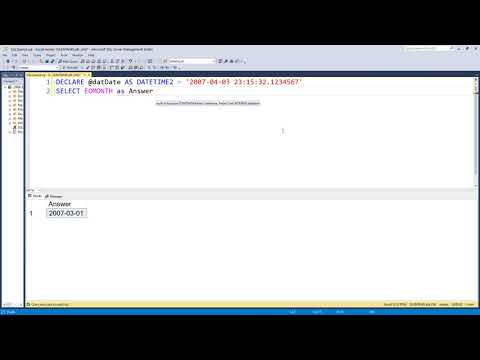
Found 13 images related to sql start of previous month theme
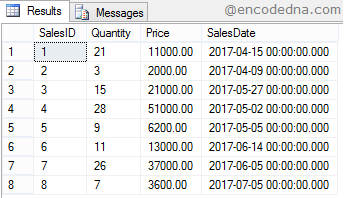
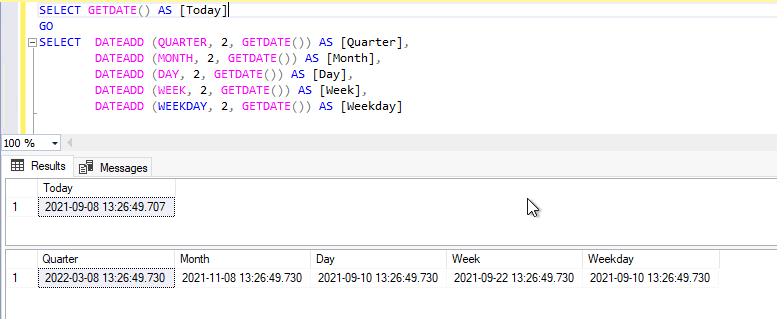


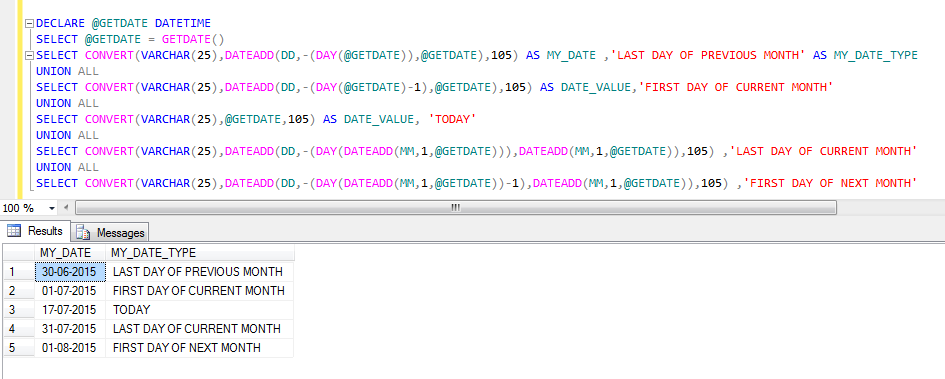





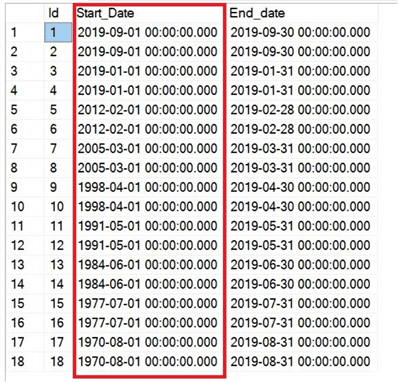
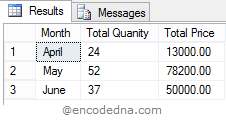



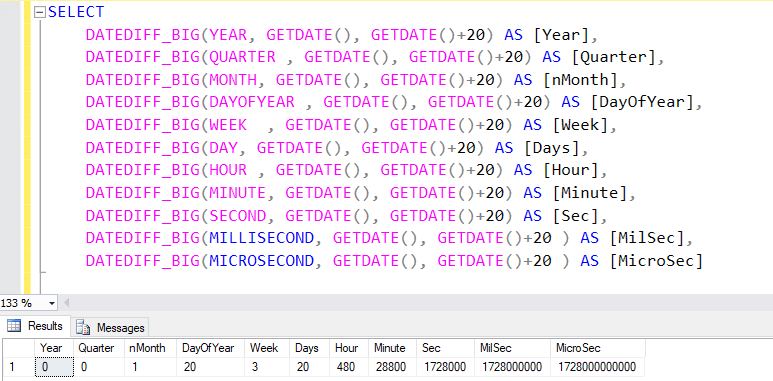

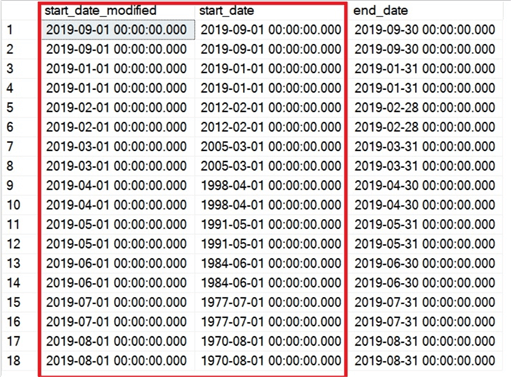





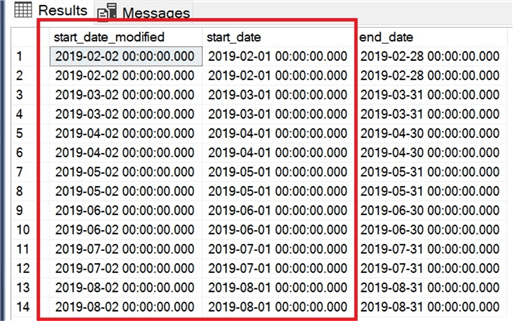
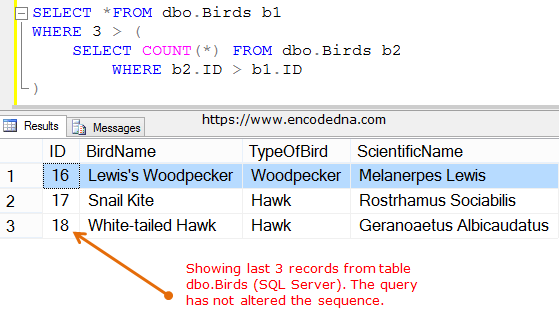


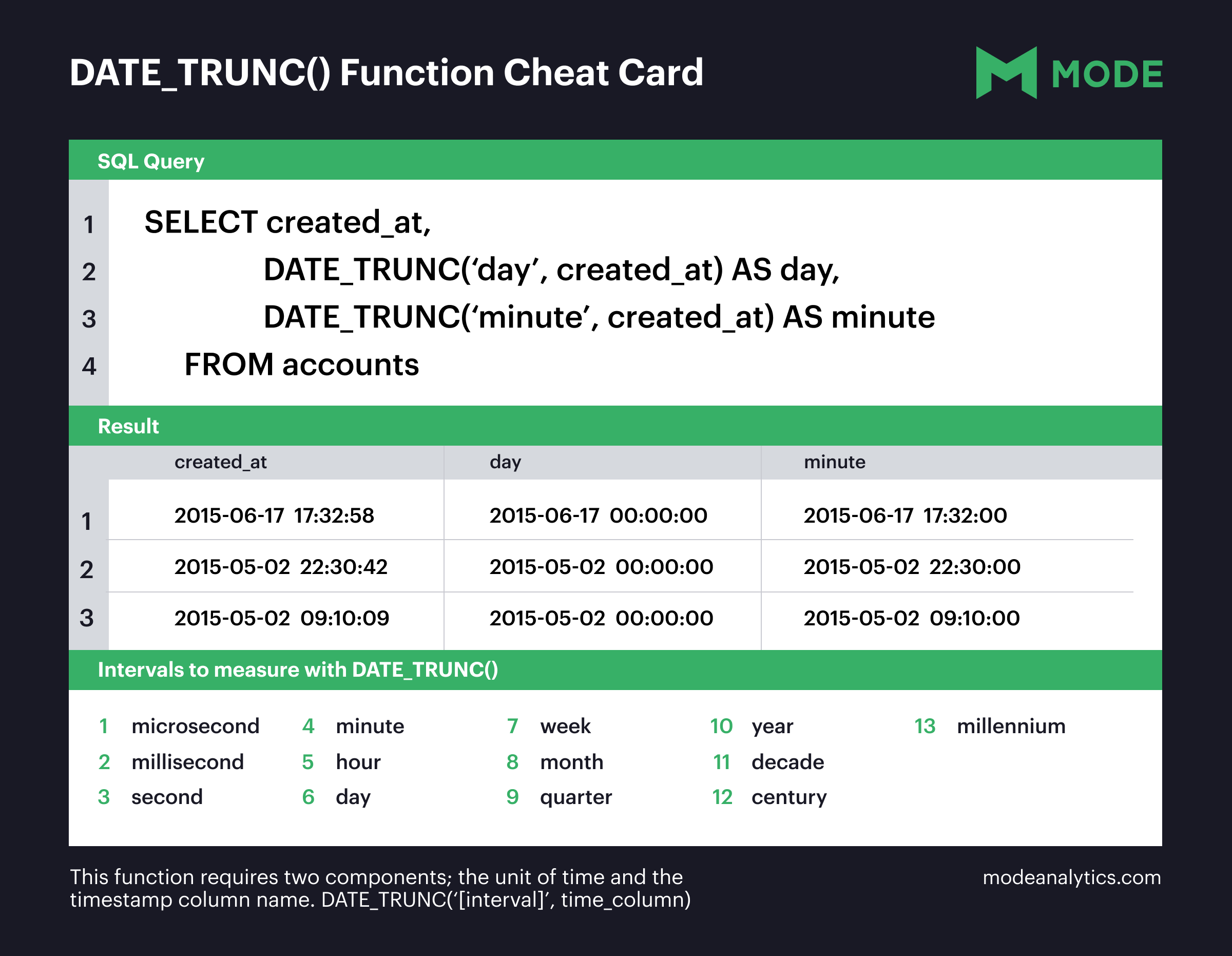



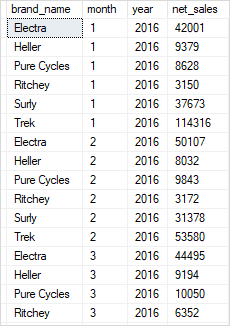
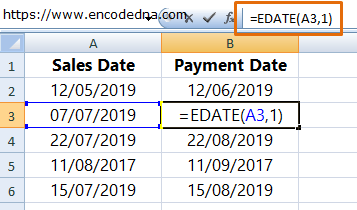
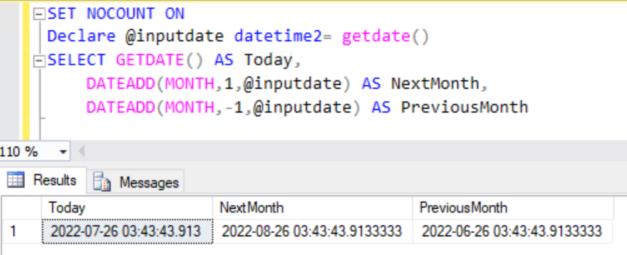

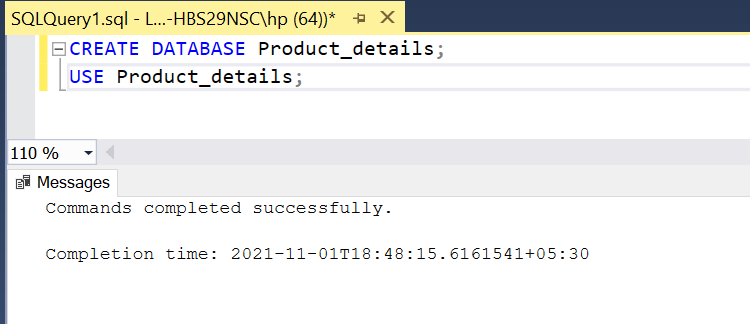


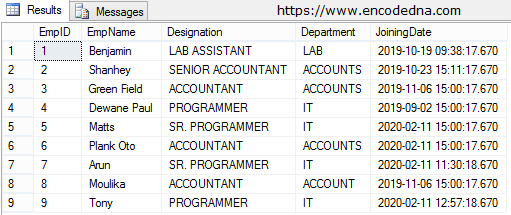



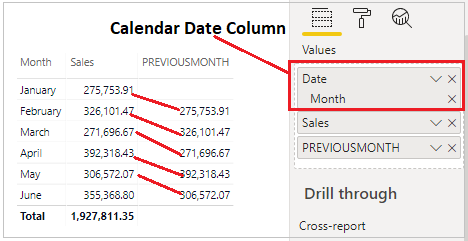


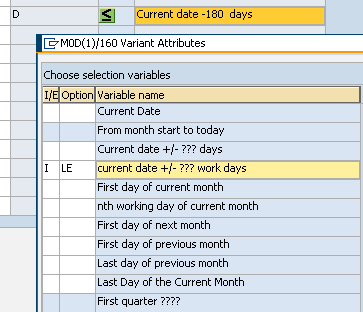


Article link: sql start of previous month.
Learn more about the topic sql start of previous month.
- How to get first and last day of previous month (with timestamp …
- How to Get the Previous Month in T-SQL – LearnSQL.com
- How to Get the Previous Month in T-SQL – LearnSQL.com
- How To Get Last One Month Data in MySQL – Ubiq BI
- SQL get previous month (in January too) – Stack Overflow
- How to Find Last Date of Month in MSSQL Server [ EOMONTH ]
- How to Get the Previous Month in SQL – AirOps
- How to find the first day for the current month, last day of the …
- First Date of Previous Month – SQL Server Portal
- Pass first and last day of the previous month in SSIS Execute …
- Last date of the previous month in a variable
- Finding previous month start and end dates in Datacom SQL